Legend Of Bochica And Mysterious Ancient Stone Structures In Colombia
A. Sutherland - AncientPages.com - Ancient people in Colombia worshiped a man named Bochica who came to their land and showed the natives how to plant crops, make clothing, and build houses.
Legends of Bochica are still alive among the Colombian Indians.
Legend Of Bochica
Bochica was also called Nemqueteva, Sadigua, or Xué, which means the Sun.
There are so many similarities between Bochica and the serpent god Quetzalcoatl worshiped by the Aztecs, that we can only assume this was the same individual who was known under various names in several countries in the South America.
Just like Quetzalcoatl, Bochica had white skin, white hair, and a long white beard. He came riding to the country on an unknown animal and taught moral values and religious traditions.
Left: Monument dedicated to Bochica in Cuitiva, Boyacá, Colombia. Credit: Public Domain; Right: Colombian figurine made of gold. Image credit: British Museum.
He told the natives should worship one supreme God - Chiminigagua, and explained he had been sent by him with the message people should love each other and refrain from wrongdoing.
The Chibcha Indians of Columbia still recall the god Bochica came at a time of chaos. Bochica was a gentle being who preached against war, worship of idols, and he was capable of miraculously healing the sick by touch. Just like Jesus Christ, Bochica was also capable of restoring sight to the blind.
Mysterious Stone Structures And Artifacts In Colombia
Leaving myths and legends aside, let us now look at some remarkable stone structures, artifacts, and statues. We should not forget that many of these stone structures and statues were made in honor of the Colombian gods.
Ciudad Perdida is situated atop a mountain in the Sierra Nevada de Santa Marta, a UNESCO-inscribed Biosphere Reserve. Credit: Lilo2111 - CC BY-SA 4.0
Hidden in the middle of the jungle, archaeologists are still trying to uncover ancient secrets of Ciudad Perdida, the Lost City.
It is a place that has remained unknown to most of the outside world for centuries, and even today, very few people are aware of its existence. Ciudad Perdida, Spanish for "Lost City," is one of Colombia's most spectacular cultural heritage sites.
The "Lost City " was inhabited by the Tayrona people until the end of the 16th century and tucked away within the lush jungles of the Sierra Nevada de Santa Marta not far from the Colombian coastline. Ciudad Perdida is made up of hundreds of stone terraces and rings, which archaeologists believe were used as foundations for temples, dwellings, and plazas.
Not far from San Agustín, there is an archaeological Park with a museum containing ceramics, artifacts, and information about the local culture. The park features about 130 well-preserved statues that are depicting sacred animals, men, women, and unknown beings wearing masks. Similar statutes have been discovered in other parts of Latin America.
Ancient people in Colombia shared, just like other ancient cultures worldwide, the same fascination with gold.
In ancient Colombia, gold was used to fashion some of the most visually dramatic and sophisticated works of art found anywhere in the Americas before European contact.
San Agustín - Depictions of gods worshipped in Colombia. Credit: Public Domain
Although gold was not valued as currency in pre-Hispanic Colombia, it had great symbolic meaning. It was one way the elite could publicly assert their rank and semi-divine status, both in life and in death. Gold was also used to create depictions of gods.
The individual depicted wears a bird-beak head ornament. The rayed headdress could represent a crown of brilliantly colored feathers. Among the Kogi and the Tukano, the crown is variously said to symbolize the sun's rays.
In many societies, metalsmiths, like shamans, are associated with magic. The different techniques to transform the gold in revered objects could be equated to the magic used by the shaman to transform himself. On the other hand, it also possible those shamans' were in possession of prehistoric knowledge that was preserved through generations in memory of the gods.
Colombia's ancient past is, without a doubt, truly intriguing.
Written by – A. Sutherland - AncientPages.com Senior Staff Writer
Updated on July 12, 2021
Copyright © AncientPages.com All rights reserved. This material may not be published, broadcast, rewritten or redistributed in whole or part without the express written permission of AncientPages.com
More From Ancient Pages
-
 Creepy Story Of Lucida Mansi Who Was Obsessed With Her Beauty
Featured Stories | Jul 31, 2019
Creepy Story Of Lucida Mansi Who Was Obsessed With Her Beauty
Featured Stories | Jul 31, 2019 -
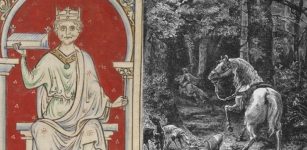 Was King William II Murdered In The New Forest?
Featured Stories | Aug 5, 2021
Was King William II Murdered In The New Forest?
Featured Stories | Aug 5, 2021 -
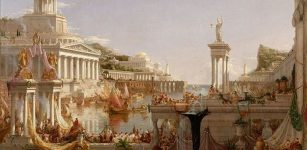 Mediterranean Sea Was Hotter 2,000 Years Ago And Contributed To The Fall Of The Roman Empire
Archaeology | Jul 27, 2020
Mediterranean Sea Was Hotter 2,000 Years Ago And Contributed To The Fall Of The Roman Empire
Archaeology | Jul 27, 2020 -
 Clues To The Mysterious Dog-Headed St. Christopher And His Connection To The Egyptian Jackal God Anubis Found?
Featured Stories | Jan 14, 2025
Clues To The Mysterious Dog-Headed St. Christopher And His Connection To The Egyptian Jackal God Anubis Found?
Featured Stories | Jan 14, 2025 -
 Mesolithic Stone Mace Head Found Near Buckingham, UK
Archaeology | Apr 7, 2023
Mesolithic Stone Mace Head Found Near Buckingham, UK
Archaeology | Apr 7, 2023 -
 ‘Masters Of The Desert’ – Hohokam People, Massive Caliche Structures And Sophisticated Extensive Irrigation Canals
Civilizations | May 31, 2016
‘Masters Of The Desert’ – Hohokam People, Massive Caliche Structures And Sophisticated Extensive Irrigation Canals
Civilizations | May 31, 2016 -
 On This Day In History: Albert Einstein Publishes His General Theory Of Relativity – On Mar 20, 1916
News | Mar 20, 2017
On This Day In History: Albert Einstein Publishes His General Theory Of Relativity – On Mar 20, 1916
News | Mar 20, 2017 -
 Riddle Of The Indo-European Language – Which Of The Two Hypotheses Is Correct?
Featured Stories | Oct 25, 2023
Riddle Of The Indo-European Language – Which Of The Two Hypotheses Is Correct?
Featured Stories | Oct 25, 2023 -
 4,500-Year-Old Ramp Might Explain How Huge Stones Were Transported To Great Pyramids’ Building Site
Archaeology | Nov 9, 2018
4,500-Year-Old Ramp Might Explain How Huge Stones Were Transported To Great Pyramids’ Building Site
Archaeology | Nov 9, 2018 -
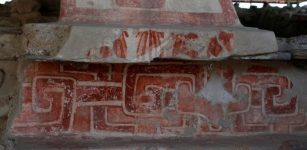 Teotihuacan’s Puzzling Red Glyphs Could Be Unknown Ancient Writing
Archaeology | Sep 22, 2020
Teotihuacan’s Puzzling Red Glyphs Could Be Unknown Ancient Writing
Archaeology | Sep 22, 2020 -
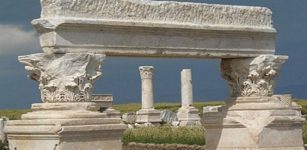 Christian Church And Large House Unearthed In Ancient Laodicea, A Major Hub Of Christianity
Archaeology | Oct 31, 2020
Christian Church And Large House Unearthed In Ancient Laodicea, A Major Hub Of Christianity
Archaeology | Oct 31, 2020 -
 Final Journey Of Ötzi Iceman: More Clues Found In Frozen Moss
Archaeology | Nov 1, 2019
Final Journey Of Ötzi Iceman: More Clues Found In Frozen Moss
Archaeology | Nov 1, 2019 -
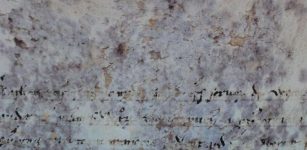 Part Of Secret Vatican Manuscript Decoded
Archaeology | Sep 7, 2017
Part Of Secret Vatican Manuscript Decoded
Archaeology | Sep 7, 2017 -
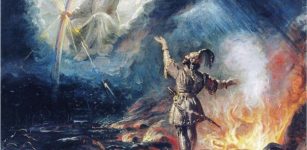 Ukko: Karelian-Finnish God Of Thunderstorms, Harvest, Patron Of Crops And Cattle
Featured Stories | Apr 2, 2020
Ukko: Karelian-Finnish God Of Thunderstorms, Harvest, Patron Of Crops And Cattle
Featured Stories | Apr 2, 2020 -
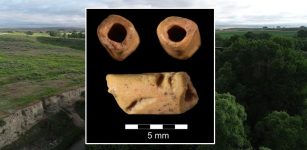 Oldest Bead In America Discovered At La Prele Mammoth Site, Wyoming
Archaeology | Feb 13, 2024
Oldest Bead In America Discovered At La Prele Mammoth Site, Wyoming
Archaeology | Feb 13, 2024 -
 Two Well-Preserved Shipwrecks Found By Swedish Maritime Divers In Baltic Sea
Archaeology | Jan 30, 2018
Two Well-Preserved Shipwrecks Found By Swedish Maritime Divers In Baltic Sea
Archaeology | Jan 30, 2018 -
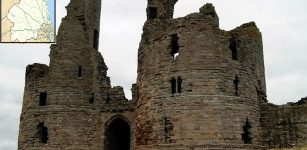 Dunstanburgh Castle: Underground Passageways And The Legend Of Sir Guy The Seeker
Featured Stories | Apr 5, 2016
Dunstanburgh Castle: Underground Passageways And The Legend Of Sir Guy The Seeker
Featured Stories | Apr 5, 2016 -
 On This Day In History: The Gregorian Calendar Implemented – On Oct 5, 1582
News | Oct 5, 2016
On This Day In History: The Gregorian Calendar Implemented – On Oct 5, 1582
News | Oct 5, 2016 -
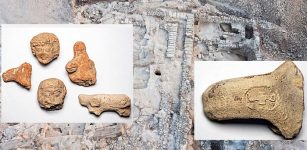 Kingdom Of Judah: Government Complex And 120 Seal Impressions Stamped On Jars – Unearthed
Archaeology | Jul 23, 2020
Kingdom Of Judah: Government Complex And 120 Seal Impressions Stamped On Jars – Unearthed
Archaeology | Jul 23, 2020 -
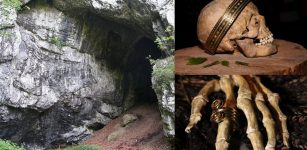 Puzzle Of The Bull Rock Cave – Ancient Mass Grave Remains Unexplained
Featured Stories | Mar 12, 2018
Puzzle Of The Bull Rock Cave – Ancient Mass Grave Remains Unexplained
Featured Stories | Mar 12, 2018




